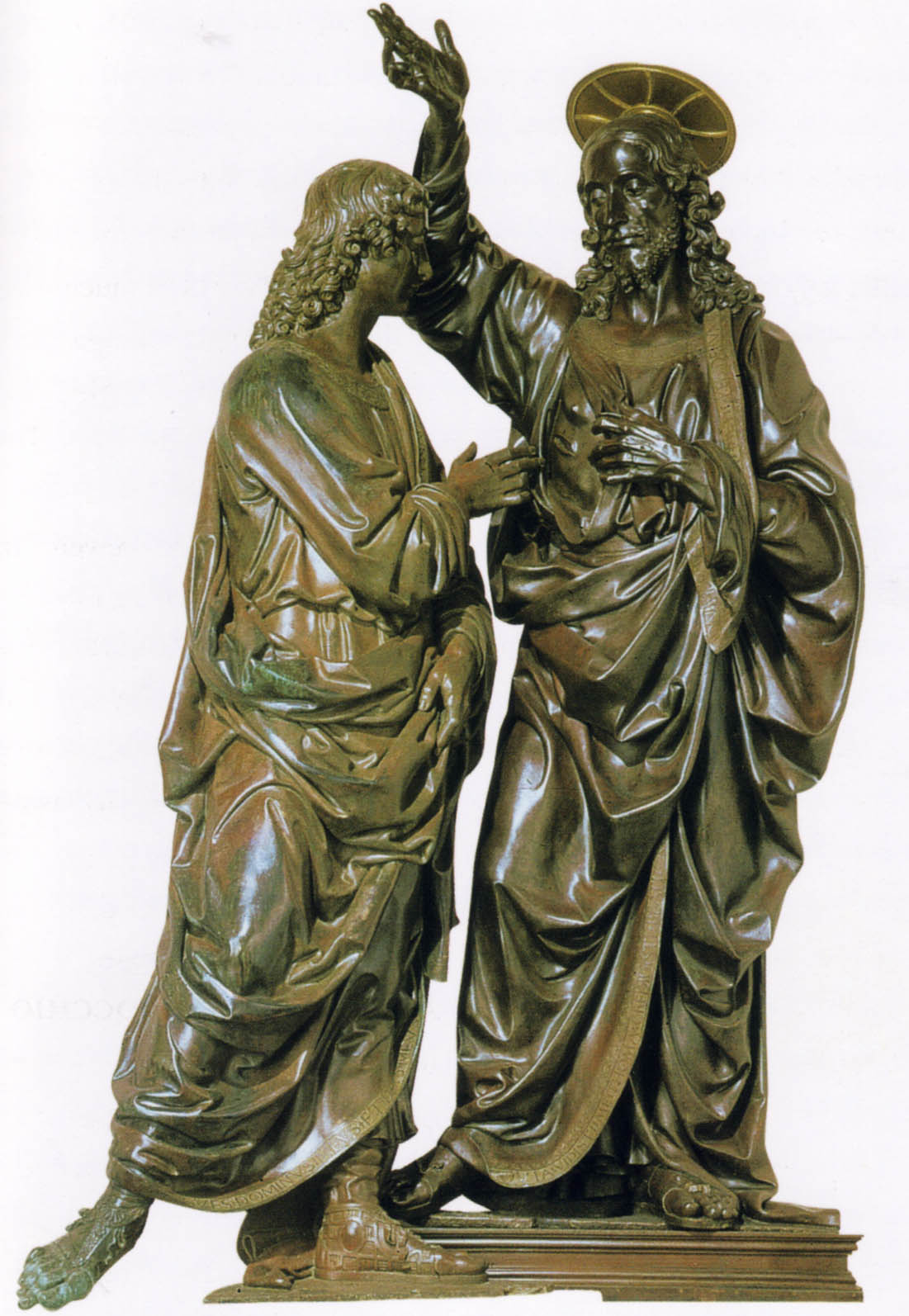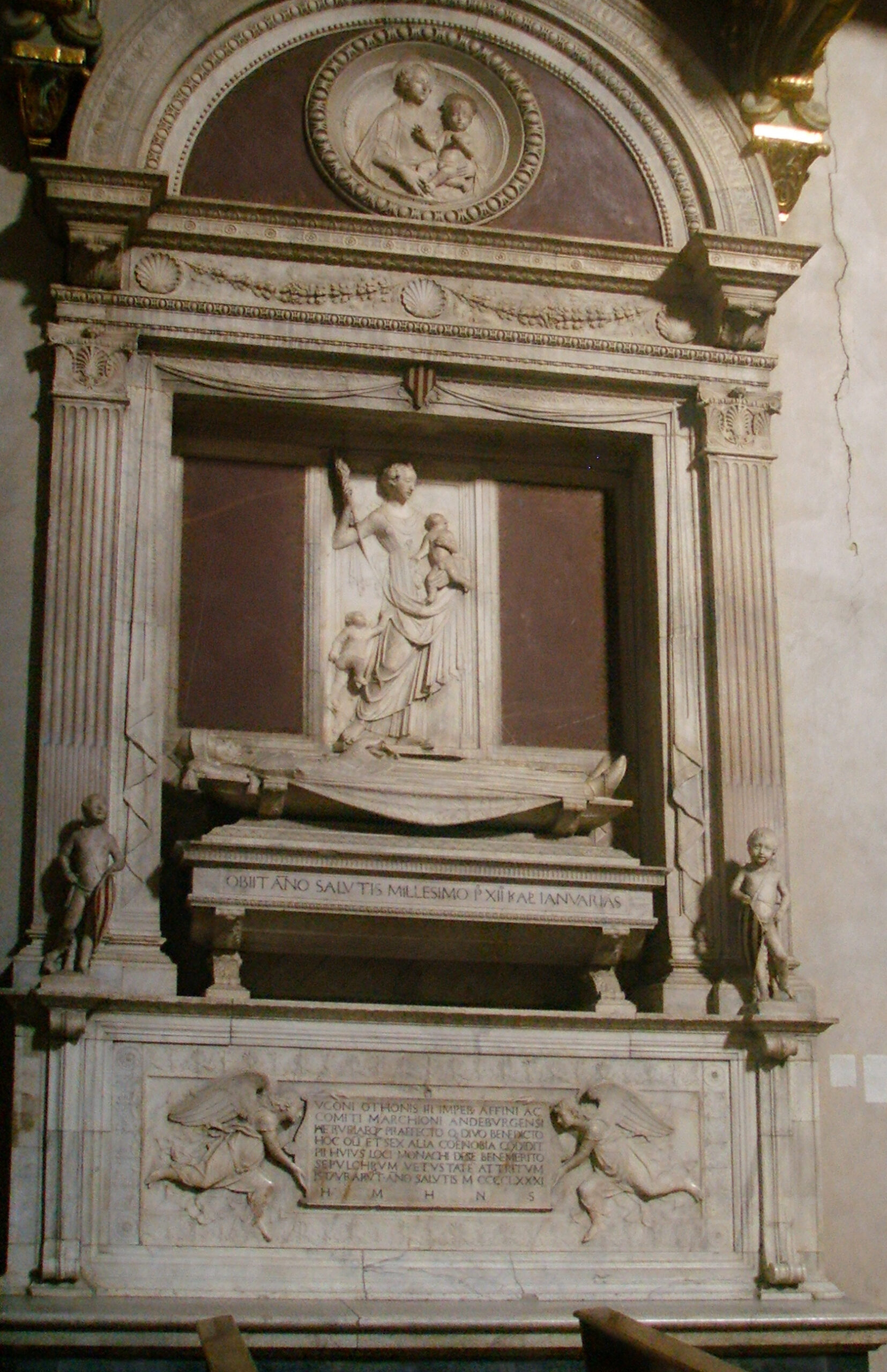Today is the Feast Day of St. Thomas. Best known for his insistence that he lay his hands on Jesus as proof of his resurrection from the dead, Thomas gives comfort to those who doubt and recalls Jesus’ words: “Thomas, because thou hast seen Me, thou hast believed. Blessed are they that have not seen and yet have believed” (Jn 20:29). Thomas and his fateful touch were memorably visualized in bronze by Andrea del Verrocchio, who was hired by the Mercanzia to fill their recently acquired niche on the facade of Orsanmichele in Florence.
St. Thomas’ Day was an important feast in Florence as it celebrated not only the apostle but also the death of Hugh, Marquis of Tuscany, who died on St. Thomas Day in 1001, as Dante tells us in Paradiso 16:127-32.
Ciascun che de la bella insegna porta
del gran barone il cui nome e ‘l cui pregio
la festa di Tommaso riconforta,da esso ebbe milizia e privilegio;
avvegna che con popol si rauni
oggi colui che la fascia col fregio.(All those whose arms bear part of the fair ensign
of the great baron – he whose memory
and worth are honored on the feast of Thomas –received knighthood and privilege from him,
though he whose coat of arms has fringed that ensign
has taken sides now with the populace.)
Marquis Hugh, the Great Baron, was the legendary founder of the Florentine Badia, the oldest Benedictine monastery in the city. Though it was actually founded by his mother Willa, the Badia honored Ugo with a tomb in the high altar chapel, splendidly remade in the late fifteenth century by Mino da Fiesole.
Andrea del Verocchio, Doubting Thomas, bronze, 1465-6. Florence: Orsanmichele
Mino da Fiesole, Tomb of Marquis Ugo of Tuscany, 1481-2. Florence: Badia Fiorentina




